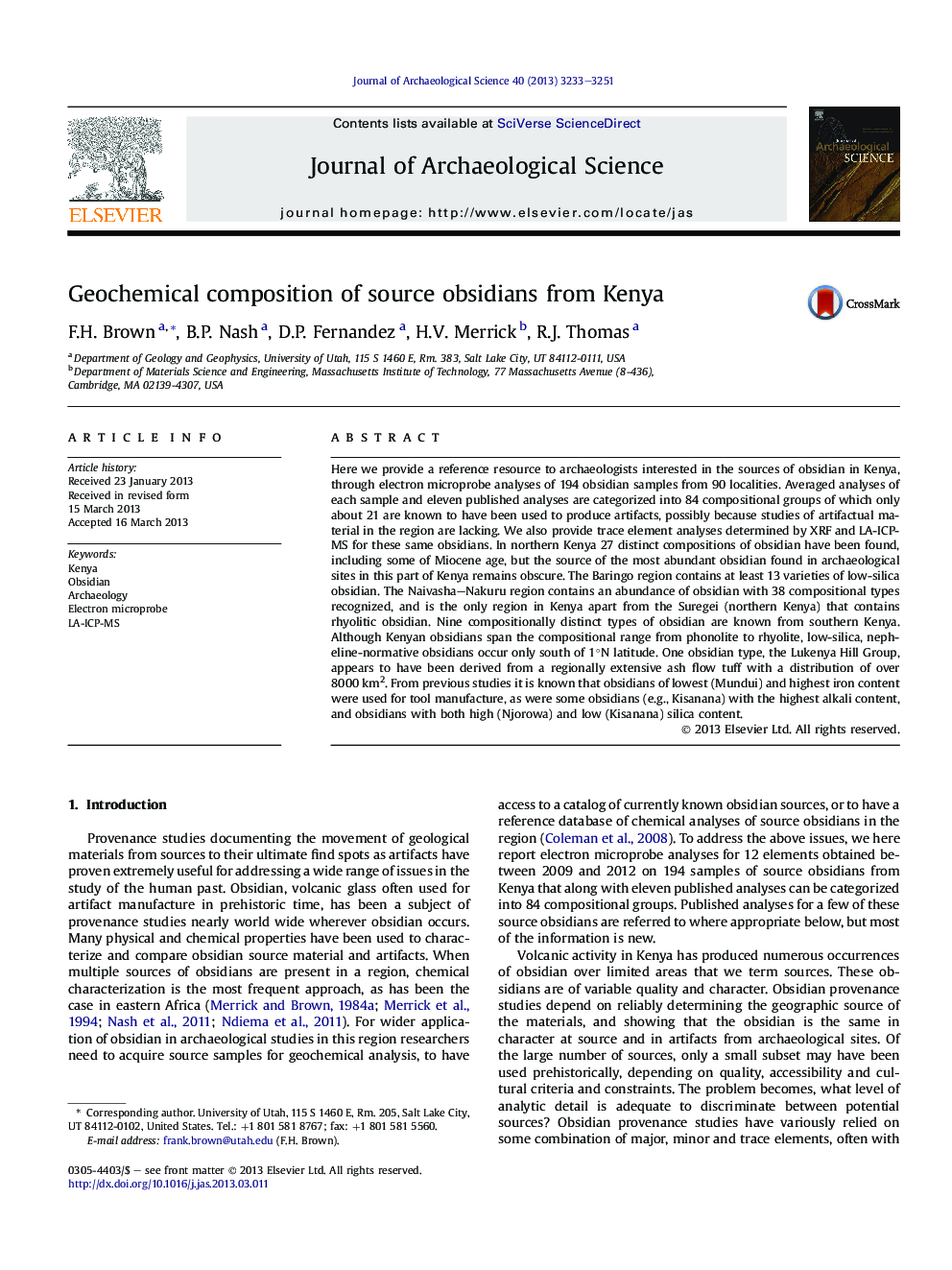| کد مقاله | کد نشریه | سال انتشار | مقاله انگلیسی | نسخه تمام متن |
|---|---|---|---|---|
| 1035409 | 943847 | 2013 | 19 صفحه PDF | دانلود رایگان |

• We analyzed 194 Kenyan source obsidians from 90 localities by electron microprobe.
• We report LA-ICP-MS and XRF analyses for trace elements in these same obsidians.
• We group known Kenyan source obsidians into eighty-five compositional types.
• Fe, Ca, Ti, Al, and Cl contents suffice to identify most known Kenyan source obsidians.
• The analyses are a resource for archaeological obsidian provenance studies in Kenya.
Here we provide a reference resource to archaeologists interested in the sources of obsidian in Kenya, through electron microprobe analyses of 194 obsidian samples from 90 localities. Averaged analyses of each sample and eleven published analyses are categorized into 84 compositional groups of which only about 21 are known to have been used to produce artifacts, possibly because studies of artifactual material in the region are lacking. We also provide trace element analyses determined by XRF and LA-ICP-MS for these same obsidians. In northern Kenya 27 distinct compositions of obsidian have been found, including some of Miocene age, but the source of the most abundant obsidian found in archaeological sites in this part of Kenya remains obscure. The Baringo region contains at least 13 varieties of low-silica obsidian. The Naivasha–Nakuru region contains an abundance of obsidian with 38 compositional types recognized, and is the only region in Kenya apart from the Suregei (northern Kenya) that contains rhyolitic obsidian. Nine compositionally distinct types of obsidian are known from southern Kenya. Although Kenyan obsidians span the compositional range from phonolite to rhyolite, low-silica, nepheline-normative obsidians occur only south of 1°N latitude. One obsidian type, the Lukenya Hill Group, appears to have been derived from a regionally extensive ash flow tuff with a distribution of over 8000 km2. From previous studies it is known that obsidians of lowest (Mundui) and highest iron content were used for tool manufacture, as were some obsidians (e.g., Kisanana) with the highest alkali content, and obsidians with both high (Njorowa) and low (Kisanana) silica content.
Journal: Journal of Archaeological Science - Volume 40, Issue 8, August 2013, Pages 3233–3251